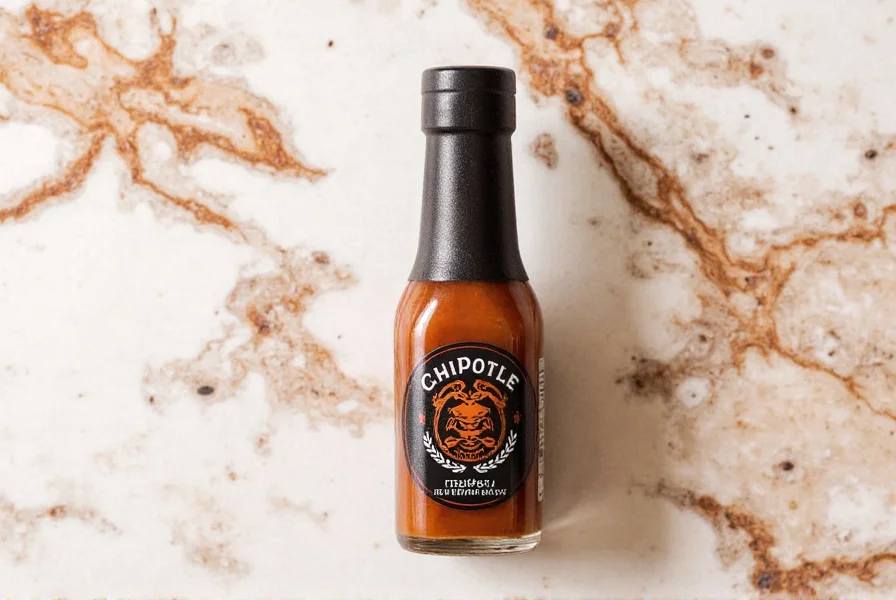Table of Contents
Introduction to Chipotle Sauce
Chipotle sauce is a versatile, smoky-spicy condiment made from smoked and dried jalapeño peppers, known as chipotles. This Mexican-inspired sauce has gained global popularity for its complex flavor profile that balances heat, smoke, and subtle sweetness. Unlike many spicy sauces, chipotle sauce offers depth and versatility that elevates both simple meals and gourmet dishes. Whether you’re a home cook or professional chef, understanding chipotle sauce’s origins, preparation, and applications can transform your culinary creations.

What is Chipotle?
Chipotle refers to a specific type of chili pepper: jalapeños that have been smoke-dried. This traditional Mexican preservation method creates a unique flavor profile with deep smokiness and moderate heat. The word "chipotle" comes from Nahuatl (an indigenous Mexican language) meaning "smoked chili." While Chipotle Mexican Grill popularized the term in Western cuisine, chipotle sauce itself is a broad category of condiments made from these peppers, not exclusive to any single brand.
Authentic chipotle peppers are traditionally smoked over wood fires for days, then rehydrated and blended into sauces. Modern commercial versions may use different smoking techniques, but the core ingredients remain consistent: smoked jalapeños, vinegar, oil, and spices. This sauce is distinct from adobo sauce, which is a tomato-based sauce often used to preserve chipotle peppers.

How is Chipotle Sauce Made?
Traditional chipotle sauce production involves several key steps:
- Smoking fresh jalapeños over wood (typically mesquite or pecan) for 1-2 days until fully dried and wrinkled
- Rehydrating the dried peppers in hot water or vinegar
- Blending with complementary ingredients like garlic, vinegar, oil, and spices
- Adjusting consistency and flavor through careful balancing of heat, smoke, and sweetness
Professional chefs and home cooks alike create variations: some add tomatoes for richness, others incorporate citrus for brightness, and many include sweeteners like honey or brown sugar to counterbalance the heat. The most authentic versions use only smoked peppers, vinegar, and minimal spices to preserve the pure chipotle flavor.
Uses and Recipes with Chipotle Sauce
Chipotle sauce’s smoky heat makes it incredibly versatile across cuisines. Here are expert-approved applications:
- Mexican Cuisine: Essential for tacos, burritos, and enchiladas; use as a topping or mixing ingredient
- Grilling and Barbecue: Excellent marinade for chicken, pork, or shrimp; add to barbecue sauces for depth
- Vegetarian Dishes: Elevates roasted vegetables, grain bowls, and bean-based meals
- Dips and Spreads: Mix with Greek yogurt or sour cream for smoky dips; blend into mayonnaise for sandwiches
- Global Fusion: Use in Asian-inspired dishes like Korean BBQ bowls or as a base for spicy stir-fry sauces
Here’s a professional chef’s recipe for chipotle-lime chicken:
- Whisk together 1/4 cup chipotle sauce, 2 tablespoons olive oil, 1 tablespoon fresh lime juice, 1 minced garlic clove, and 1/2 teaspoon cumin
- Marinate chicken breasts for at least 30 minutes (or up to 4 hours)
- Grill or bake until fully cooked; serve with fresh cilantro and avocado slices
Buying Guide: Finding the Best Chipotle Sauce
When selecting chipotle sauce, consider these key factors for quality and suitability:
| Feature | Description |
|---|---|
| Flavor Profile | Look for balanced smokiness, moderate heat, and subtle sweetness; avoid overly sweet or one-dimensional options |
| Texture | High-quality chipotle sauce should be smooth with minimal grit; avoid chunky versions unless specified for certain uses |
| Ingredients | Check for natural ingredients; avoid artificial preservatives or excessive additives; authentic versions typically list smoked peppers, vinegar, and spices as primary ingredients |
| Heat Level | Choose based on preference: mild (3-4 on heat scale), medium (5-6), or hot (7+); most commercial brands indicate heat level on packaging |
Top Brands Comparison:
- Adobo Chipotle Sauce: Known for authentic Mexican flavor and smooth texture; ideal for traditional dishes
- Trader Joe’s Chipotle Pepper Sauce: Offers balanced heat with citrus notes; great for everyday use
- La Victoria Chipotle Sauce: Traditional recipe with robust smokiness; popular for authentic Mexican cooking
- Chipotle Mexican Grill’s Version: Widely available; known for consistent medium heat and creamy texture
- Homemade: Allows customization; use dried chipotle peppers for best flavor control
Expert Tip: For authentic flavor, look for products where "chipotle peppers" appear as the first ingredient. Avoid sauces where vinegar or sugar is listed first, as this often indicates diluted flavor.
Practical Tips for Using Chipotle Sauce
Professional chefs recommend these techniques for optimal results:
- Start Small: Add 1/2 teaspoon at a time to dishes; chipotle’s heat builds gradually
- Balance with Acid: Pair with lime juice or vinegar to brighten the smoky flavor
- Use as Base: Mix with mayonnaise, yogurt, or sour cream for creamy applications
- Storage: Refrigerate after opening; most commercial sauces last 2-3 months
- Pairing: Complements proteins well but also enhances roasted vegetables, eggs, and even cocktails
Frequently Asked Questions About Chipotle Sauce
What is chipotle sauce made from?
Authentic chipotle sauce is made from smoked and dried jalapeño peppers (chipotles), combined with vinegar, oil, garlic, and spices. The exact ingredients vary by brand, but high-quality versions typically contain only 3-5 core ingredients. Avoid products with artificial flavors or excessive additives.
How spicy is chipotle sauce?
Chipotle sauce typically ranges from medium to hot on the heat scale (5-7 out of 10), depending on the brand. Unlike some hot sauces that deliver immediate intense heat, chipotle’s heat builds gradually with a smoky depth. Most commercial versions offer mild, medium, and hot options to suit different preferences.
What’s the difference between chipotle sauce and adobo sauce?
Chipotle sauce refers to a smooth, blended condiment made from rehydrated smoked peppers. Adobo sauce is a tomato-based sauce with vinegar and spices used to preserve chipotle peppers. While chipotle peppers are often sold in adobo sauce, the two are distinct: adobo is the preserving liquid, while chipotle sauce is the finished product made from the peppers themselves.
Can I make chipotle sauce at home?
Yes! For homemade chipotle sauce: soak 4-5 dried chipotle peppers in hot water for 20 minutes, then blend with 2 tablespoons vinegar, 1 tablespoon olive oil, 1 garlic clove, and a pinch of salt. Adjust consistency with water. For authentic flavor, use whole dried chipotles rather than pre-made adobo sauce.
How long does chipotle sauce last?
Unopened commercial chipotle sauce typically lasts 12-18 months. Once opened, refrigerate and use within 2-3 months. Homemade versions last 1-2 weeks in the refrigerator. Always check for off smells, mold, or separation before use; if present, discard immediately.
What dishes pair best with chipotle sauce?
Chipotle sauce complements protein-heavy dishes like grilled chicken, steak, and fish exceptionally well. It also enhances vegetarian options including roasted vegetables, black bean bowls, and quinoa salads. For breakfast, try it with eggs or avocado toast. In fusion cuisine, it works beautifully in Korean BBQ bowls, Thai-inspired sauces, and even Mexican-style pizza toppings.
Is chipotle sauce healthy?
Chipotle sauce is generally healthy when consumed in moderation. It contains capsaicin (from peppers), which has anti-inflammatory properties and may boost metabolism. However, check labels for added sugars and sodium; some commercial versions contain unnecessary additives. Homemade versions with minimal ingredients are the healthiest option.
What’s the best way to store chipotle sauce?
Always refrigerate chipotle sauce after opening. Store in an airtight container to prevent oxidation. For homemade versions, consider freezing in ice cube trays for easy portioning. Commercial sauces typically maintain quality for 2-3 months refrigerated; check the expiration date on packaging for specific guidance.
Conclusion
Chipotle sauce is more than just a spicy condiment—it’s a culinary powerhouse that brings depth, complexity, and smoky warmth to countless dishes. From its traditional Mexican roots to modern global applications, this versatile sauce continues to evolve while staying true to its core flavor profile. By understanding its origins, selecting quality products, and mastering usage techniques, you can unlock endless possibilities in your kitchen. Whether you’re cooking simple weeknight meals or crafting gourmet creations, chipotle sauce’s unique character will elevate every bite.











 浙公网安备
33010002000092号
浙公网安备
33010002000092号 浙B2-20120091-4
浙B2-20120091-4